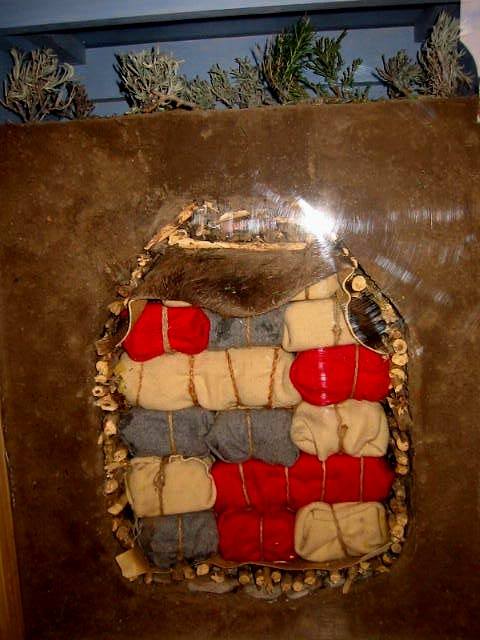Today’s Mountain Man Term is: Cache – A safe place, often hidden, for storage of food and other supplies.
The mountain man, whether an explorer, a trader, or a trapper, cached goods for several reasons. The explorer could lighten his load for a difficult part of his journey, or cache important items (such as food, lead and gunpowder) for his return trip. The trader could store some of his trade goods for later retrieval. The trapper needed a place to hide his beaver pelts until he was ready to transport them to the markets back east. A successful cache had to be built in secrecy, in a safe location, and with the utmost care to avoid leaving even the smallest bit of evidence.
We have a replica on display at the museum, with intriguing information on how it was built and what all they could contain.
Below is an excerpt from Meriwether Lewis about building his cache…
“The cache being completed, I walked to it and examined its construction. It is in a high plain about 40 yards distant from a steep bluff of the south branch on its northern side The situation a dry one, which is always necessary. A place being fixed on for a cache, a circle about 20 inches in diameter is first described, the turf or sod of this circle is carefully removed, being taken out as entire as possible in order that it may be replaced in the same situation when the cache is filled and secured. This circular hole is then sunk perpendicularly to the depth of one foot, if the ground be not firm, somewhat deeper. They then begin to work it out wider as they proceed downward, until they get it about six or seven feet deep, giving it nearly the shape of a kettle, or lower part of a large still. Its bottom is also somewhat sunk in the center.
The dimensions of the cache are in proportion to the quantity of articles intended to be deposited. As the earth is dug, it is handed up in a vessel and carefully laid on a skin or cloth, and then carried to some place where it can be thrown in such manner as to conceal it, usually into some running stream where it is washed away and leaves no traces which might lead to the discovery of the cache.
Before the goods are deposited, they must be well dried. A parcel of small dry sticks are then collected, and with them a floor is made, three or four inches thick, which is then covered with some dry hay or a raw hide well dried. On this, the articles are deposited, taking care to keep them from touching the walls by putting other dry sticks between as you stow away the merchandise. When nearly full, the goods are covered with a skin, and earth thrown in and well rammed until, with the addition of the turf first removed, the hole is on a level with the surface of the ground. In this manner, dried skins or merchandise will keep perfectly sound for several years.”
Captain Meriwether Lewis, 9 June 1805
Westbound Lewis and Clark expedition, near the mouth of the Marias River (about 50 mi. NE of Great Falls, MT)

